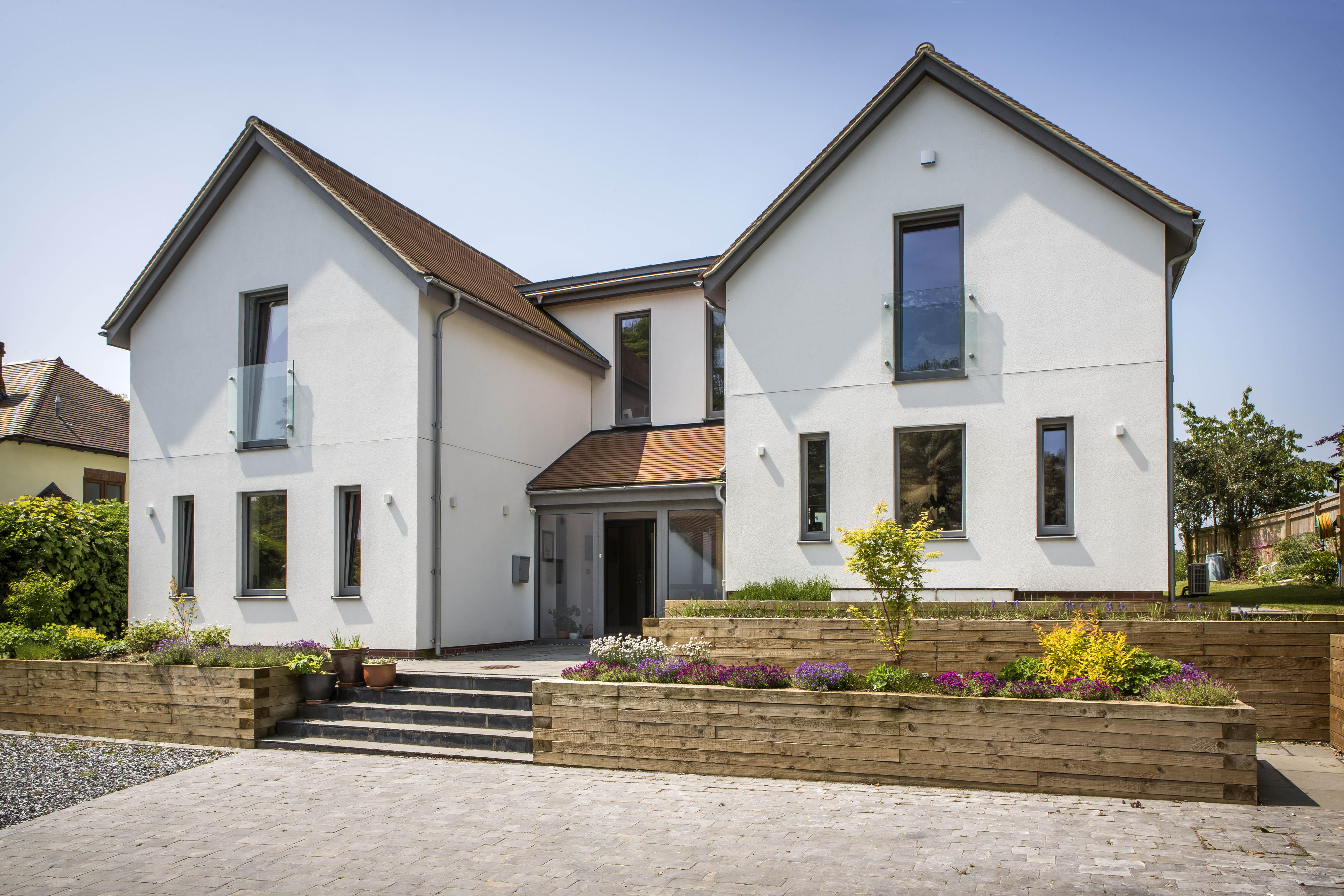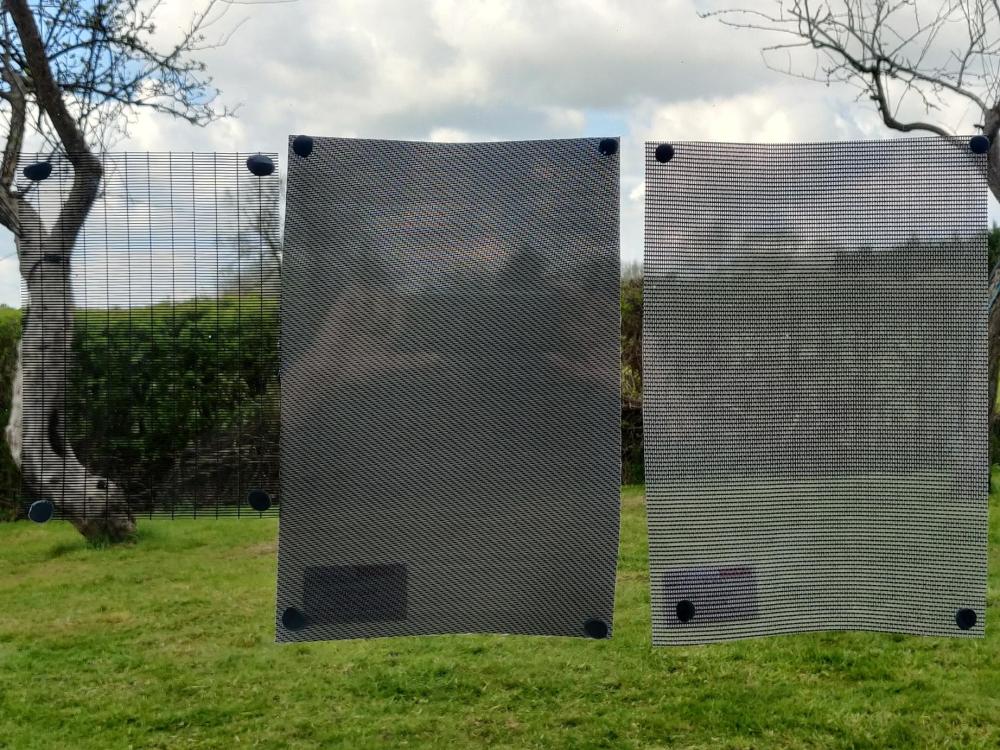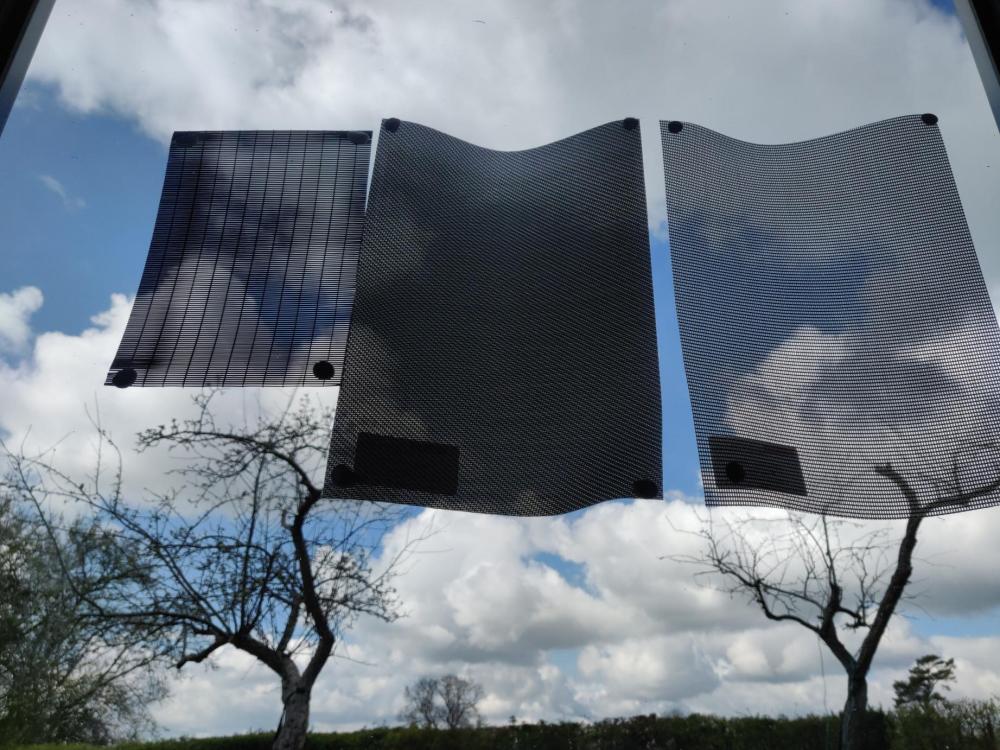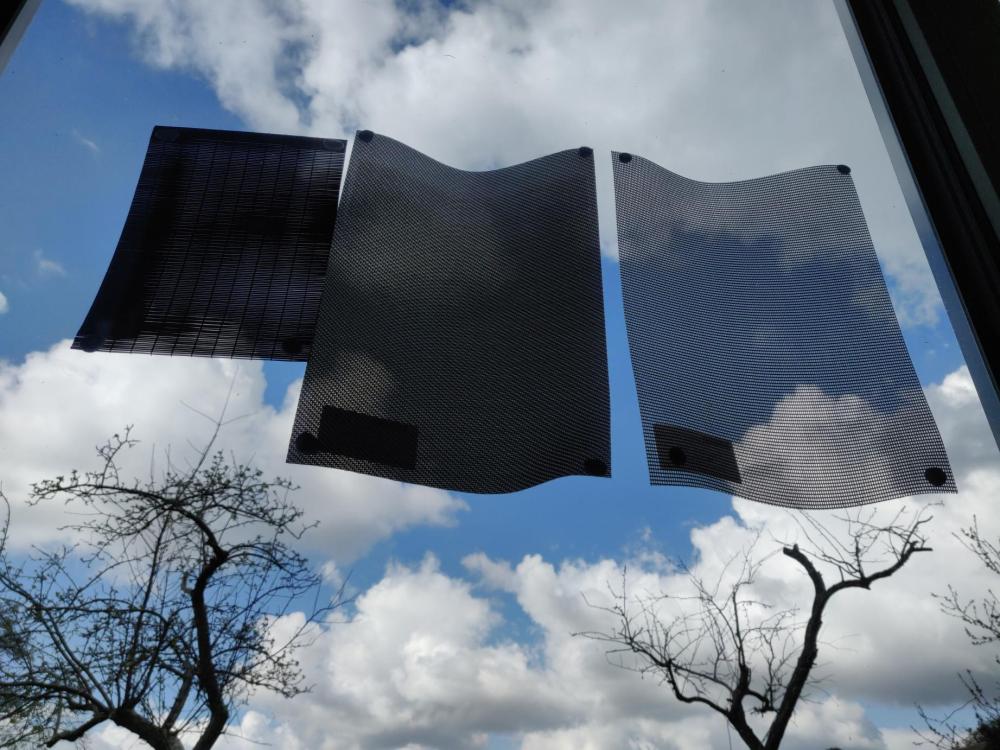
ragg987
Members-
Posts
872 -
Joined
-
Last visited
-
Days Won
1
Everything posted by ragg987
-
ASHP in cooling mode, warned off the idea
ragg987 replied to Post and beam's topic in Air Source Heat Pumps (ASHP)
I've used mine in cooling mode for the 7 summers that we've been here. Works well for us, I added solar shading to the large south and east facing windows and this helps a lot. As above we have flow set around 12C and run it for a few hours consuming excess solar power. It makes a big difference, though not the same as Aircon. Our MVHR will switch to heat exchange mode when it is too warm outside, that helps. And on a cool night we open windows to help. I added an Aircon kit, essentially some insulation and a drip tray. There is usually condensation in this area, and downtimes also on the copper pipes leading to the UFH manifold. Nothing excessive and seen no issues so far. -
Ceiling recessed blind or curtain rail
ragg987 replied to Red Kite's topic in Plastering & Rendering
We did not recess curtain tracks, my example was for track lighting. I recall that there is a recessed curtain track option, I did not explore so cannot help on that front, sorry. -
I am happy with a couple of provisos, some I mentioned above. To summarize: I would put a sound muffler in the MVHR flow pipe, or some other strategy to reduce impact of fan noise in bedrooms. Increase the rigidity of the first floor pozi joists. I get quite a bit of floor bounce. Maybe even a concrete floor as used in some countries? Do something to reduce the floorboards 'squeaking' when walked on. Perhaps related to above. By sealed air gaps I mean caulk above at floor and ceiling level. This leaves air gaps under forests for MVHR.
-
Example CoP results here https://www.researchgate.net/figure/COP-of-the-air-to-water-heat-pump-with-different-load-side-inlet-temperatures-Based-on_fig1_326114264
-
The heat pump will be least efficient at higher water temperatures, so if you are constantly topping it up AND aiming for a high 55C that seems to be the worst case. I use a timer to heat our 300l tank to 42C then we consume it all day and to up the following night. This is because I am on 7.5p night rate. Prior to the dual rate I heated at the warmest time of the day to improve HP efficiency, as per @PhilT above. And to take advantage of solar power during the day. In the current sunny weather excess solar diverter heats the water and I don't need to run the HP. I suspect you were advised to keep it off timer as a HP takes longer than a gas boiler to heat the water. So less risk of running out.
-
Aha - that is really useful thanks - I had not considered the over-voltage in the garage. Grid voltage in our area tends to be steady at about 242v, so well within the 230 -6 +10. But of course no guarantee it will remain there.
-
A 6mm cable shows a 1.5% drop at 5kW. I guess my question is what mandates the 1% voltage drop limit? Is there a standard someplace for PV inverters, or is this a overheating risk?
-
I want to fit some solar panels on my garage roof - approx 2.5kWp to supplement the 4kWp I already have on my main house roof. This is facing due south on a 40deg pitch roof. I would also fit a myEnergi Libbi battery and inverter in this space, plus a myEnergi Zappi car-charger. The garage has a small DB with a 32A (6mm) armoured cable in a duct to the CU in the main house, approx 25-30m long. I was thinking of a 5kW inverter to allow more headroom in the peak power input or output to the battery. One of the companies quoting tell me the 32A cable is not suitable as the power drop at 5kW would exceed 1%. I cannot understand why a cable rated for 32A would become a problem - can anyone explain this or am I being given some B*s*?
-
I can do this with the standard Hitachi ASHP controller, provided the times for price boundaries are known. I use the flow temp compensation and variable circulator speed options. Set timer to raise room temp by e.g. 2 degrees and flow temp will boost, so will flow rate. Set timer to reduced room temp and either the system powers off or reduced flow temp and rate. Depends on the delta temperature. I use this scheme when the external temperature is above freezing. When colder my system efficiency drops quickly so I leave the room set to a constant temperature, however the compensation control will still adjust flow to optimise for the load. I am about to get a smart meter fitted and will switch to octopus intelligent soon after. My simulation suggest I will save about 25% on the bill with a few timer and behaviour changes, even allowing for a 10% increase in electrical consumption due to running less efficiently overall.
-
solar shading Microlouvre?
ragg987 replied to ragg987's topic in Environmental Materials & Construction Methods
Fitted inside the window? I understood placed inside it was more a case of heat diffusion rather than keeping it out? I.e. avoid the direct sunlight on your furniture. -
solar shading Microlouvre?
ragg987 replied to ragg987's topic in Environmental Materials & Construction Methods
The website shows they have a removable option. You may be right about vulnerability, I intend calling them next week to discuss. I wonder if they have a roll up option rather than rigid frame? That way I can store them in a box, assuming I don't damage then whilst handling! I've looked at some solar calculators, and the sun is below 40 degrees most of the winter and into the shoulder months. An option might be just to leave them on and settle for the reduction in solar gain. Don't know. -
solar shading Microlouvre?
ragg987 replied to ragg987's topic in Environmental Materials & Construction Methods
Luckily that view is blocked by trees and other houses. But our internet dish points to the top of it so we have line of sight from our roof. -
solar shading Microlouvre?
ragg987 replied to ragg987's topic in Environmental Materials & Construction Methods
Comparing Microlouvre to Mermet Satine 5501 to Mermet Ultravision. Images at 0, 20, 40 degrees inclination. -
Living in our build for over 5 years now (is that still a new build?) and turning to first cycle of maintenance. Internal painting, quotes on way. Check. Cleaning drains / gutters. Check We have approx 20m2 of South and West facing glazing. Great in the winter as the light and solar gain is very welcome. But last summer we got too hot indoors, despite running the ASHP to cool. A large patio umbrella has helped, it partially shades 2 of the glazed areas. But... Googling I came across this product, Microlouvre. https://www.smartlouvre.com/ It looks great, I could clip it on to the windows, externally, around April or may and remove it in aug or sept and store in the garage. A sample arrived and it looks good, permitting a view out while completely blocking sun from about 40 degrees up. Anyone got any experience? Not priced it yet... Alternatives I looked at: External solar film. Not removable and reduces light and solar gain in winter. External roller blinds. To be effective for solar shade they pretty much block the views and light. V expensive for electrical control. Light sails, awnings, brise soleil. Don't like the big overhang, not practical in our build. V expensive for electrical control. Fixed slats. Already have this on one window, works well. Other half not keen. Plus impractical for glazed doors.
-
Best floor type for the discerning selfbuilder. Go. :)
ragg987 replied to puntloos's topic in General Flooring
We used engineered oak pretty much everywhere. Glued to substrate, so never creaks plus works better with ufh than a floating floor. A bit of wear and tear adds to the aesthetic. I suspect it will not need changing any time soon. For bathrooms, toilet, Utility used amtico, again glued down. Nice and warm underfoot unlike tile or stone. Plus not as hard. The only change I would make is to avoid oak in the kitchen as we not so good at mopping up spills immediately. Next time amtico. -
When we moved into our newly finished house, humidity was around 60% and by the end of 1 year it had dropped to the 40s. I put this down to drying out of the build. Could this account for your observations?
- 131 replies
-
- triple glazing
- condensation
-
(and 3 more)
Tagged with:
-
Heat pump running costs comparison question
ragg987 replied to andygo's topic in Other Heating Systems
ASHP COP is higher of it is not running at max. So if heat load is the same, then the larger heat pump will potentially require lower energy to run. There may be other factors e.g. number of fans or circulator size that impact this. If you look at COP figures within a single manufacturers range you will see the numbers are not the same. -
(Expletive deleted) agree.
-
Isn't she the one who is labelled as a denier? From what I gather she is not saying it WILL be fine, only that it probably will. And herein lies the rub. We have no way of knowing what will happen and when. Yes systems have resilience and can absorb changes, however there will be a tipping point. Many species have perished in the past, why would we survive? It seems to me that as population grows, we have to change our behaviours and reduce waste and the consequences of that.
-
What is the build and heat source? If a low energy build and using Ashp you will want flow temperature to be quite low and probably only 2 or 3 C lower than return. In this case don't see that the insulation would add much. And good to see you proposing 150 centres, this will allow you to keep flow temperature low, for an Ashp this will improve cop.
-
Ditto - takes a few hours to be effective as reliant on UFH, so best to run it early and long. Don't forget all people, applicances etc in the house are adding to the heat load.
-
I went with a small Hitachi ASHP (7kW nominal). It just required a dip switch to be set to enable cooling, the controller then recognised the mode and it can be set / programmed same as heating. I also needed to buy a couple of bits ("cooling kit"), essentially condensation control - insulation for the circulator pump and a drip tray with drain pipe. I was told by Hitachi that they do not advertise the mode, something to do with regulatory approvals. In practical terms it is very helpful at reducing the internal temperature, and it helps that the MVHR goes into heat-exchange mode when outside temp is very high thus keeping the cool air in the house. We had to add shading into the mix as our double aspect lounge has too much solar gain. With all 3 measures we were quite comfortable last summer in those weeks when we nudged 30C.
-
Really appreciate this. I need to figure out how to tackle behind render carrier boards. A company I spoke to suggest I dust insect powder into the void using a pressure pump. They also said breaking the cycle is key as the flies leave a pheromone that draws them back. I'm going to try this and will report back.
-
Spring has sprung. And with the warmth and sunshine the flies have exploded. This has occured for the last 3 years now - start in spring, buzz around until autumn and then vanish. They congegrate on our west, east and south-soffit boards and render at the top of our 2-storey house. I get the impression that they may be sheltering behind the render carrier boards and now that the sun is out they want out too! Any ideas how to tackle this, given i would have limited access to behind the render boards? A google search suggest these can get through tiny spaces so sealing may not be effective, and I guess if sealed tight might encourage a damp space? I have a few of the red-top catchers out and they are of extremely limited use - they catch maybe a few hundred and there are thousnads of these things.
-
toilet smells vs humidity
ragg987 replied to hendriQ's topic in Mechanical Ventilation with Heat Recovery (MVHR)
You need to balance inflow with outflow. So if you increase outflow in the bathroom you need to input more in adjacent bedroom. Not really ideal as will increase noise and waste heat. If the bathroom door is kept shut, there should be no leakage of smells or humidity as the it will create a one way airflow from under the door. I suggest you locate exhaust at furthest point from the door. And agree that an additional local extractor makes little sense. Regarding fan noise, suggest you install a sound attenuator (like a giant car exhaust pipe) after the mvhr and before your room outlets.






